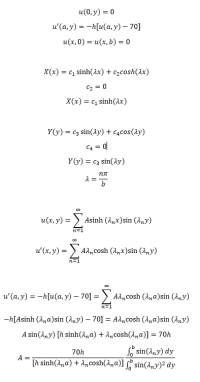A few remarks:
When you split the main function [imath]u[/imath] into two functions, one of them is [imath]\psi[/imath]. This function does not depend on time, so it should be written as [imath]\psi(r,\theta)[/imath]. Also when you split [imath]\psi(r,\theta)[/imath] into [imath]\psi_1[/imath] and [imath]\psi_2[/imath], one of them will obviously not depend on [imath]\theta[/imath], particularly the one that will hold the constant as a boundary condition, so it should be written as [imath]\psi_1(r)[/imath].
Other things were done perfectly!
You solved the time problem correctly. [imath]T(t)[/imath]
You solved the angular problem correctly. [imath]\phi(\theta)[/imath]
You solved the radial problem correctly. [imath]R(r)[/imath]
And you solved the Bessel problem correctly [imath]J_{\mu}[/imath]. I am impressed that you could handle the constants easily when they were new ideas as the initial condition of the heat equation depended on two variables!
Lastly the Bessel order starts at [imath]\mu = 0[/imath], so the summation should be written as [imath]\displaystyle \sum_{\mu = 0}^{\infty}[/imath] and don't forget to write [imath]\lambda[/imath] with two indices [imath]\lambda_{\mu n}[/imath] because it is holding the [imath]n[/imath]th zero of [imath]R_{\mu}(r)[/imath]. And I forgot to mention that you forgot to find [imath]A_{0n}[/imath] in the heat equation!
BravooO
 Note:
Note: If you are interested to solve more PDEs problems in the future, please open a new thread as this thread is becoming very large while its main purpose was done a long time ago!



